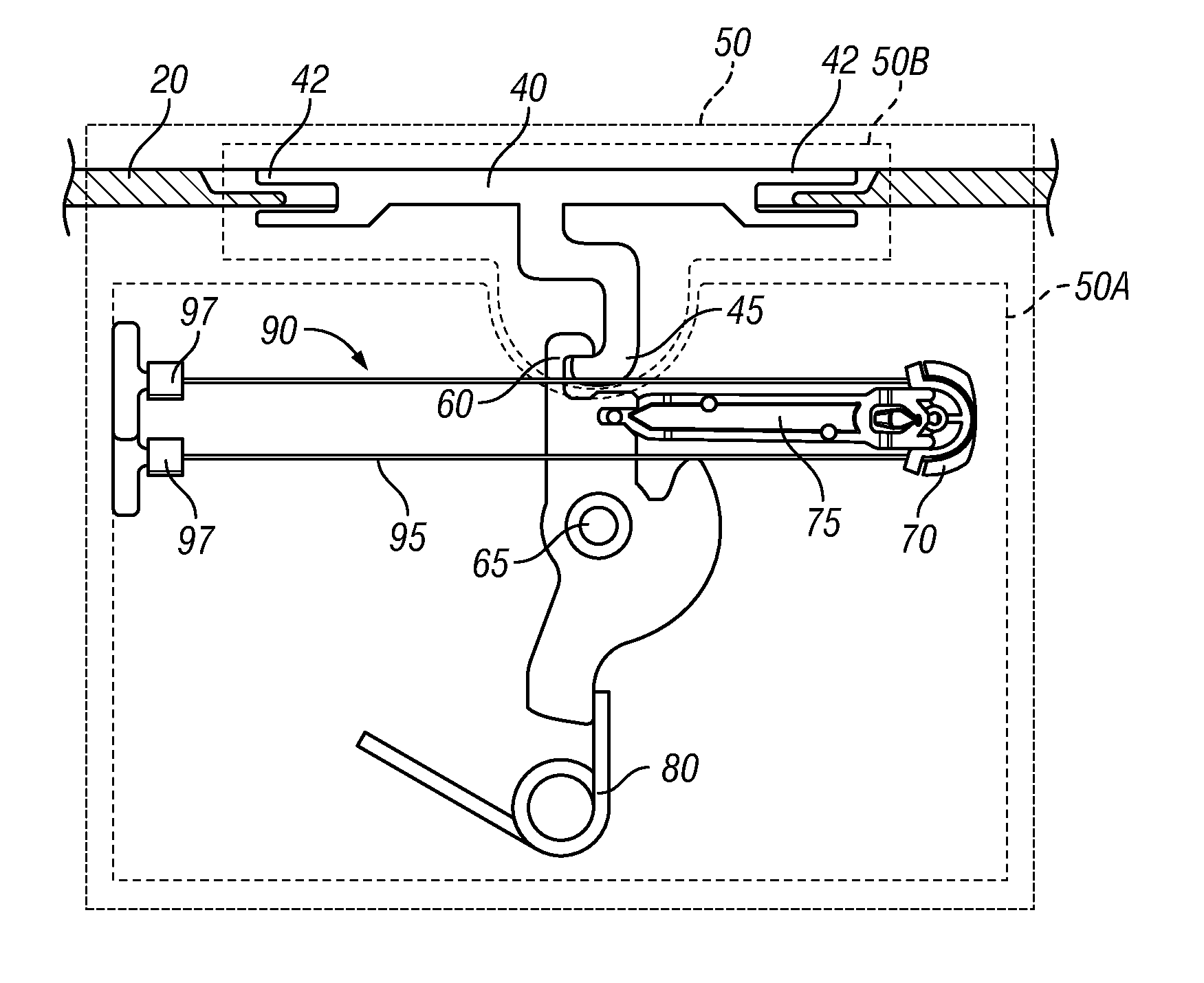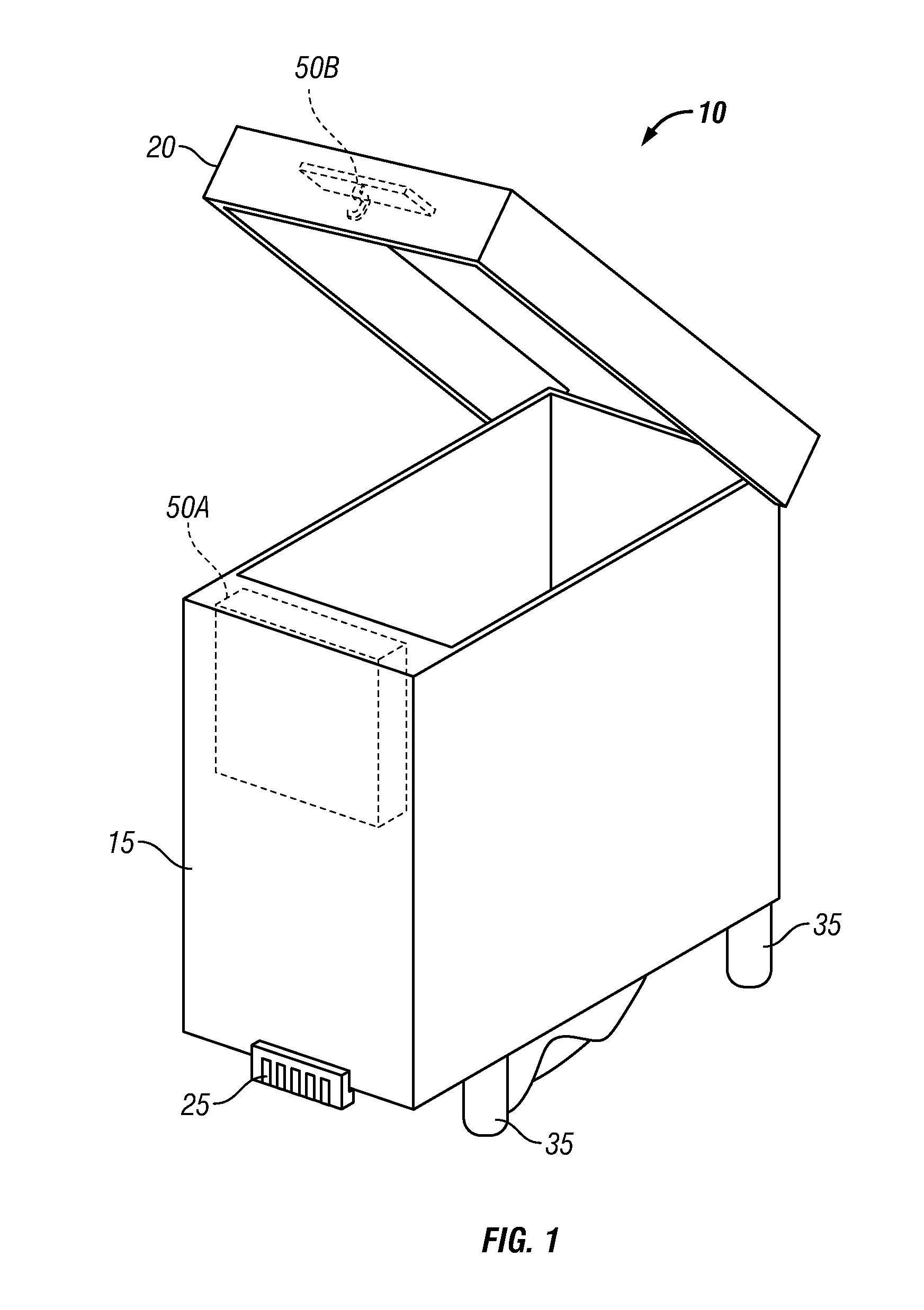Self-aligning modular latch
a self-aligning, modular technology, applied in the direction of carpet fasteners, lock applications, instruments, etc., can solve the problems of limited stroke, memory alloy wire actuators, and increased parts cos
- Summary
- Abstract
- Description
- Claims
- Application Information
AI Technical Summary
Benefits of technology
Problems solved by technology
Method used
Image
Examples
Embodiment Construction
[0017]The following description discloses embodiments of a container having a self-aligning latch such that tolerances in the assembly of the lidded container are compensated for by lateral motion of the latch fastener with respect to the engagement mechanism. These features allow the use of wider tolerances in the fabrication and assembly of the parts of the lidded container while still enabling the use of a lid-release actuator having a limited stroke.
[0018]In the following detailed description, numerous specific details are set forth to provide a full understanding of the present disclosure. It will be apparent, however, to one ordinarily skilled in the art that embodiments of the present disclosure may be practiced without some of the specific details. In other instances, well-known structures and techniques have not been shown in detail so as not to obscure the disclosure.
[0019]The method and system disclosed herein are presented in terms of a container adapted to contain medic...
PUM
 Login to View More
Login to View More Abstract
Description
Claims
Application Information
 Login to View More
Login to View More - R&D
- Intellectual Property
- Life Sciences
- Materials
- Tech Scout
- Unparalleled Data Quality
- Higher Quality Content
- 60% Fewer Hallucinations
Browse by: Latest US Patents, China's latest patents, Technical Efficacy Thesaurus, Application Domain, Technology Topic, Popular Technical Reports.
© 2025 PatSnap. All rights reserved.Legal|Privacy policy|Modern Slavery Act Transparency Statement|Sitemap|About US| Contact US: help@patsnap.com



